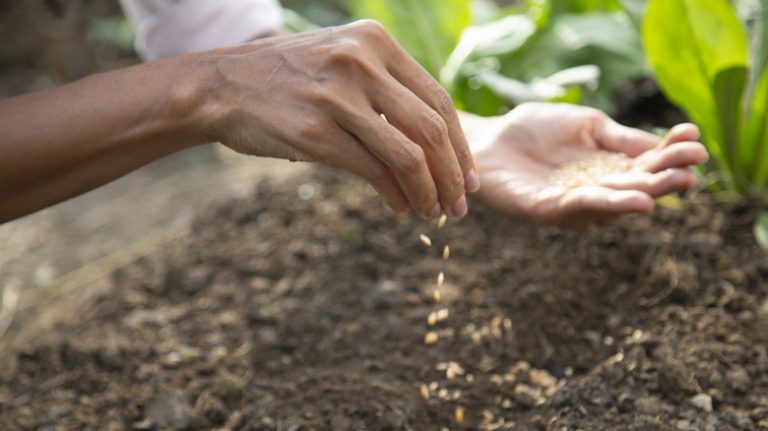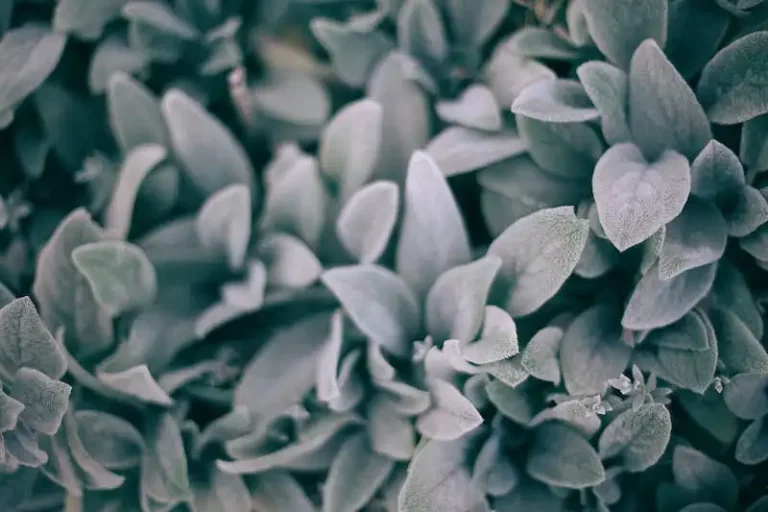Tulips are one of the most popular flowers in the world, known for their beautiful and vibrant colors. They come in a variety of colors, including yellow, orange, and other shades. Tulip bulbs are planted in the fall, typically between September and December, to ensure proper growth and blooming in the spring. The flowers can be planted in flower beds, gardens, or even in containers.
When planting tulips, it is important to choose a well-drained location with full sun exposure. Tulips need at least 6 hours of direct sunlight per day to thrive. The soil should be rich in organic matter and have good drainage. If the soil is heavy or clay-like, adding an extension such as sand or grit will help improve drainage. Tulips also prefer a pH level between 6.0 and 7.0.
Plant the bulbs about 6 inches deep in the soil, with the pointed end facing up. If you live in an area with frosty winters, it is a good idea to plant the bulbs deeper, about 7 inches deep, to protect them from freezing temperatures. After planting, water the bulbs thoroughly and cover the area with a layer of mulch to help retain moisture and regulate soil temperature.
Tulips are usually grown as annuals, meaning they only flower for one season and then need to be replanted. However, some tulip varieties, such as species and wild tulips, can be grown as perennials and will come back year after year. These types are better suited for warmer climates like Florida, where the winters are not as cold.
As the tulips begin to grow, it is important to keep an eye out for any pests or diseases. Aphids and slugs are common pests that can damage the foliage and flowers. Applying insecticides or using natural solutions like soapy water can help control them. It is also important to remove any dead or yellowing foliage in the fall to prevent the spread of diseases.
Tulips usually start blooming in early spring, adding a burst of color to the garden. The blooming season usually lasts for a few weeks, and different varieties of tulips will bloom at different times. To have a longer blooming period, stagger the planting and choose early, mid, and late season tulip varieties.
In conclusion, growing tulips can be a rewarding experience. By choosing the right location, planting them properly, and providing the care they need, you can enjoy the beauty of these colorful flowers in your garden. Whether you plant them as annuals or perennials, tulips will always bring joy and beauty to your outdoor space.
7 Tips for Planting Tulips
Planting tulips can add bursts of color to your garden, making it a show-stopping spot in the spring. To ensure the success of your tulip plantings, here are 7 tips to follow:
- Do some research: Before planting tulips, take some time to research different types of tulips available. There are various colors, heights, and flowering times to choose from.
- Choose the right location: Tulips prefer well-drained soil and a sunny spot. Avoid planting them in areas that get waterlogged or have poor drainage.
- Prepare the soil: Tulips thrive in rich, well-drained soil. Enhance the soil by adding compost or well-rotted manure before planting.
- Plant in the fall: Tulips are typically planted in the fall, a few weeks before the first frost. This allows them to establish their root system before winter.
- Plant the bulbs at the right depth: As a general rule, plant tulip bulbs at a depth that is roughly three times the height of the bulb. This ensures proper growth and flower development.
- Switch up planting locations: Tulips can be planted in the same spot for a few consecutive years, but it’s better to switch locations. This helps prevent diseases and ensures better growth and yields.
- Be realistic with expectations: While tulips are beautiful, they are considered as “annuals” rather than perennials in many regions. This means they may not come back year after year. However, with proper care, tulips can be encouraged to return for a second or even third season.
By following these 7 tips, you can increase the chances of success when planting tulips. Enjoy the vibrant colors and stunning blooms that tulips will give your garden!
For more gardening tips and solutions, check out our blog post “Growing Tulips: 10 Things You Need to Know“. Happy planting!
Ensure Your Success With These Colorful Spring Bulbs
When it comes to growing tulips, location is everything. You need to be knowledgeable about where and how to plant these beautiful spring bulbs to ensure a successful blooming season.
Tulips are perennial plants that thrive in well-drained soil. It is important to choose a location with enough sunlight and good soil drainage. They love sunny spots, but can also do well in areas with light shade. Avoid planting them in heavy clay soil, as this can cause the bulbs to rot.
Before planting tulips, do some research about the different types available. There are many color options to choose from, including vibrant reds, pinks, and yellows, as well as more subtle shades like apricot and white. Consider the height of the tulips as well, as some varieties grow taller than others.
Timing is another important factor to consider. Tulips should be planted in the fall, about 6-8 weeks before the first frost. This allows the bulbs to establish their roots before winter sets in. If you live in an area with a mild climate, you may have to refrigerate the bulbs for a few weeks before planting them.
When planting tulips, make sure to place them about 6-8 inches deep in the soil, with the pointed end facing upwards. Space them about 4-6 inches apart to allow for proper growth. You can plant them individually, or in clusters for a more dramatic effect.
To ensure the best results, consider using a fertilizer specifically formulated for bulbs. This will provide the necessary nutrients for healthy growth. Be realistic about the number of tulips you can plant in your garden, as they can take up quite a bit of space. If you don’t have enough room, you can also plant them in containers.
In addition to tulips, there are other spring bulbs that can add a burst of color to your garden. Daffodils, hyacinths, and crocuses are just a few options to consider. These bulbs also need similar planting conditions and care.
Whether you are an experienced gardener or just starting out, planting tulips can be a rewarding experience. With the right location, soil, and care, you can enjoy a beautiful display of colorful flowers that will brighten up your garden year after year.
For more information, you can visit the following sources:
– UFIFAS Gardening Solutions: https://gardeningsolutions.ifas.ufl.edu/plants/ornamentals/tulips.html
– K-State Research and Extension Blog: https://blogs.k-state.edu/ksre-news/ 2025/03/09/bigger-blooms-tulips-or-hyacinth/
Good Soil Yields Better Results
When it comes to growing tulips, having good soil is essential. The type of soil used and its preparation can significantly affect the growth and overall health of the plants. If you want your tulips to flourish year after year, it is crucial to pay attention to the soil quality.
Planting tulips in well-draining soil is vital. Tulips prefer loose, sandy soil that allows water to flow freely. If the soil retains too much water, it can lead to rotting of the bulbs. Therefore, it is recommended to amend heavy clay soil with organic matter, such as compost, to ensure proper drainage.
It is also important to choose a spot that receives enough sunlight. Tulips require at least 6 hours of direct sunlight each day to thrive. Planting them in a sunny location will encourage stronger growth and help the flowers reach their full potential.
Another factor to consider is the planting depth. Tulip bulbs should be planted at a depth of about 6-8 inches. This ensures that they are well-insulated and protected from frost during the winter months. Plant them deep enough so that the top of the bulb is at least 3 inches below the soil’s surface.
In colder regions, it might be necessary to provide some extra protection for the bulbs during the winter. Covering the planting area with a layer of mulch or leaves can help insulate the soil and prevent frost damage. Remove the mulch in early spring when the danger of frost has passed.
If you have been growing tulips in the same spot for several years and have noticed a decline in their performance, it might be time to replenish the soil. Over time, the nutrients in the soil get depleted, resulting in weaker growth and smaller flowers. Adding compost or a balanced fertilizer can help restore the soil’s fertility and improve the overall health of your tulips.
It’s worth noting that tulips are heavy feeders, so regular fertilization is recommended. Fertilize the soil before planting in the fall and again in early spring when the tulips emerge. Use a fertilizer with a balanced ratio of nutrients, such as a 10-10-10 or 14-14-14 formula, to provide the plants with the necessary nutrients for optimal growth.
In addition to tulips, many other plants can benefit from good soil preparation and maintenance. Annuals like begonias and vinca, as well as perennials like daylilies and hostas, thrive in rich, well-draining soil. By taking care of your soil, you’ll ensure better results not only for your tulips but for all your gardening endeavors.
In conclusion, when it comes to growing tulips, good soil is key. Providing loose, well-draining soil, enough sunlight, and proper planting depth will contribute to the success of your tulips. Regular fertilization and soil maintenance will help the plants reach their full potential and provide you with beautiful blooms year after year.
Plant Like a Pro
Growing tulips can be a rewarding experience if you follow some expert tips. Here are some tips to give your tulips the best chance of success:
1. Choose a good location for your tulips. They need a sunny spot with well-drained soil. Avoid areas that get too much water or are prone to flooding.
2. Plant the bulbs in the early fall to ensure a beautiful show of flowers in the following spring. Tulips are typically planted about six to eight inches deep, depending on the size of the bulb.
3. Research the different types of tulips available and choose the ones that best fit your needs. There are various colors and heights to choose from, ranging from small yellow tulips to bigger orange ones.
4. Prepare the soil before planting. Add some organic matter, such as compost, to improve the soil’s fertility. This will help the tulips grow bigger and stronger.
5. Plant the tulip bulbs pointed side up, and cover them with soil. Water the bulbs lightly after planting to help settle the soil and promote growth.
6. Tulips need a cold period to stimulate growth, so keep them in a cool place for about 12-16 weeks before planting. This can be done by placing the bulbs in the refrigerator or a cool cellar.
7. Once the tulips sprout and start to grow, switch to a fast-release fertilizer to promote even more growth and better results. Make sure to follow the instructions on the fertilizer package for application rates.
8. During the growing season, keep the soil moist but not waterlogged. Tulips like a little water, especially during dry periods, but too much can cause the bulbs to rot.
9. After the tulip blooms are finished for the season, remove the flower heads. This prevents the plant from putting energy into forming seeds and allows it to focus on storing energy in the bulb for the next year’s growth.
10. Tulips are generally treated as annuals, meaning they are planted each year. However, if you want a second year of blooms, leave the foliage intact until it turns yellow and withers away. This allows the plant to store energy for next year’s growth.
By following these tips, you can plant tulips like a pro and enjoy the beauty of these flowers year after year.




